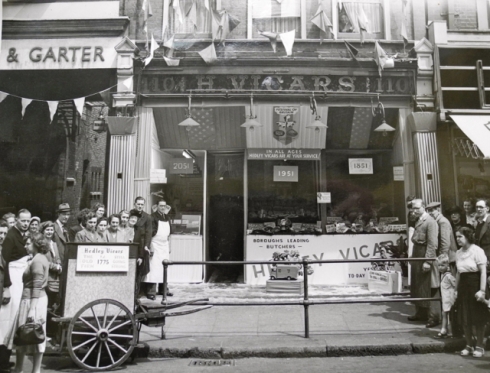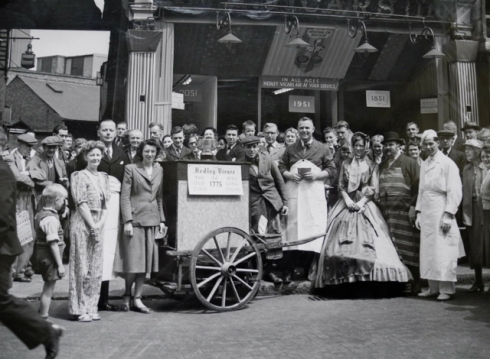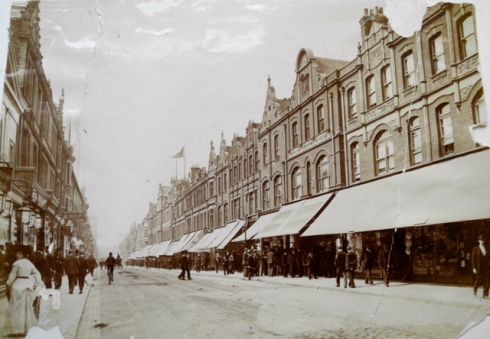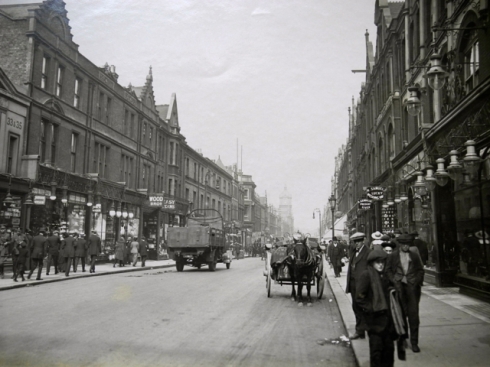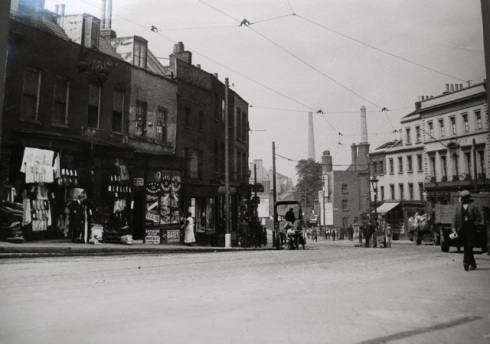You are currently browsing the monthly archive for December 2014.
During the long winter months you can really appreciate the Victorian concept of a winter garden. Avery Hill Park has the second largest winter garden in the UK after the temperate house at Kew. So quite an asset in this part of South East London and the prospect of funding from the English Heritage Fund to restore it to its full glory was welcomed by all sectors of the community. Now, all that’s changed as the University of Greenwich announced its plans to sell off the site and abandon its plans for the restoration of the historic Grade 11 listed winter garden.
The three-domed winter garden was created by Colonel North who had made his fortune from the nitrate trade in Peru and Chile. As well as recreating a little bit of tropical South America in south east London he wanted his family to enjoy exercise in inclement weather. On top of one of the domes is a playful statue of Hermes and the original iron framework dates back to the 1890s. The reclining figure of Galatea, one of the goddess nymphs of the sea, is in an imposing position. Galatea can also mean “milky white” and the statue is certainly that. Galatea Reclining on a Dolphin was designed by the Italian sculptor Leopoldo Ansiglioni in 1882.
The building did suffer some wartime damage and there is a tall palm, still there, that had grown through the broken roof back in 1947. The University had already received some funding from The English Heritage Fund and some restoration had started. Information boards with details of the full scheme have been on display for over a year. Further funding of £2.3 million was needed to restore the winter garden to its full architectural grandeur and the bid for this was within days of submission. Now there is a suspicion and fears that the site could be sold to developers.
It’s not that easy to see how a developer could make the winter garden economically viable as it wouldn’t be that easy to convert to luxury flats although there is plenty of scope on the remaining site. The future of the winter garden remains uncertain and will cause jitters in this corner of the capital.
The news this week was gloomy: austerity at 1930s levels, food poverty and accusations that the working class could no longer cook. A trip to Borough Market didn’t lift my spirits as I found out that a lamb’s kidney cost £6. When did this reversal of fortune occur; a staple of the working class now only found on the menus of top end restaurants and in the shopping bags of the well off.
Culinary differences between the different social classes have existed for a long time. During the 2nd World War the government equalized the food supply through subsidies on items consumed by the poor and the working class. Cheap cuts of meat such as offal, breast of lamb, ox tail and cheek were available at the local butchers shop.
Earlier in the week I had come across this photograph of Hedley Vicars butchers on Powis Street in Woolwich. The year was 1951, Britain was beginning the recovery from war, some rationing had ended but it would continue for another three years on meat. Hedley Vicars were celebrating 100 years of service on the high street. In keeping with the optimism of postwar Britain the shop came up with a new slogan:
“In all ages Hedley Vicars are at your service”.
Shops such as a butcher, a greengrocer, a fishmonger and a bakery were standard on any high street and had been so for decades. No wonder Hedley Vicars thought they would continue to provide a service to the people of Woolwich for another century.
Then in the 1960s supermarkets appeared changing shopping habits. Mass food production techniques meant that the less well off no longer needed to depend on cheap cuts and they disappeared from the supermarket shelves. There was a corresponding decline of small independent shops. These vintage photographs of Powis Street show a vibrant high street with an extensive range of shops. There is no longer a butchers shop on Powis Street although fresh fruit and vegetables are readily available at the daily market.
Now the supermarkets are in trouble undercut by the German no frills chains and changing shopping habits. As we brace ourselves for a few more years of austerity what changes will we see next in our high streets, our eating habits and how will our culinary skills develop? Well who can say but one thing I would be willing to bet on is that the increase in pawn shops will continue.
The curious visitor to Stamford may wonder how this town avoided the sprawl and squalor of the industrial period. Preserved in aspic it’s the perfect location for a Jane Austin drama.
Situated close to the Great North Road the town was a natural stopping point for coaches traveling between London and York. Today you can still see the great coaching inns like the George with its iconic sign which crosses the street and the Crown in Red Lion Square. Each have repurposed their old stable blocks to meet very different client groups. Football fans who like a fag can enjoy the large outdoor screen at The Crown whilst shoppers with an eye for luxury goods can visit the boutique shops at the back of The George.
The town dates back to the C5th, situated on a hill above meadows rising from the River Welland. The river remains an unspoilt focal point with dramatic views at dusk. The town’s development was restricted by the open field system. What held development back more than anything was the Lammas Pasture rights – the right of the burgess to graze their cattle and sheep over the open fields after the harvest had been taken in. The fields could be in private ownership but the burgess still had the right of Lammas over any man’s land. Towns in the midlands were particularly affected by the system. By C19th the population and risen and the town needed to expand. It was a problem and one that the local aristocracy, down the road in Burghley House, wasn’t going to lend a hand in solving.
The town returned two MPs and only householders had the franchise. The Cecils owned 200 houses in the town so had a huge influence which they weren’t going to relinquish by allowing open fields to be enclosed and possibly developed. Fearful of Chartists they also ensured that the town didn’t get caught up in industrialisation. In 1846 there was a good chance that the London to York railway could pass through.
People of Stamford were anxious to get the trade because of the decline in the coaching trade. Lord Exeter (one of the Cecils) successfully prevented the railway coming and it went through Peterborough instead. Stamford’s development was choked off and it fossilised into the stunning Georgian town we see today. Good for today’s tourists but not for those living there at the time as from 1850 the population started to decline.
Today the town is still overshadowed by Burghley House and the public school situated in the heart of the town. Market day on Friday is a lively affair with vendors chanting to sell their fresh produce. The townsfolks’ spiritual and social needs are well catered for as there are several churches and numerous public houses. Sadly, not many of the pubs have survived as traditional boozers but have been modernised into restaurants or late night drinking holes with bouncers.
I know this has little to do with the Thames but it’s good for a visit.




